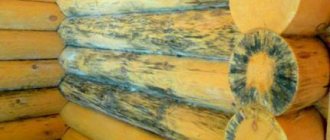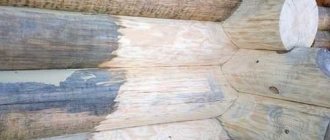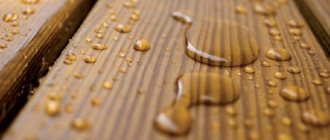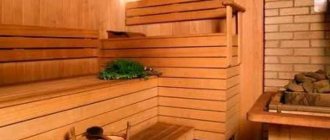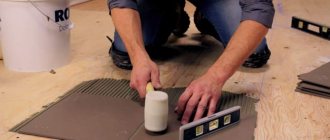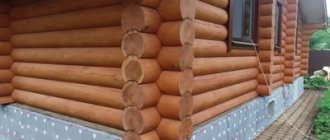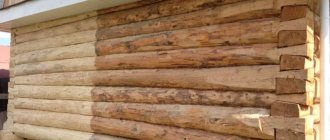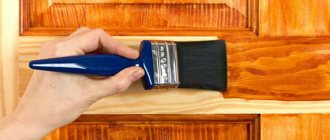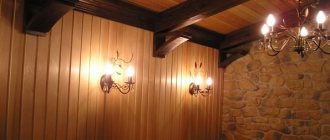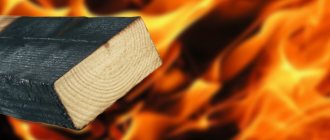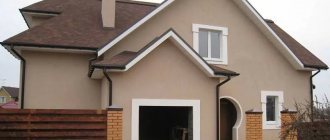By attacking wood, mold spoils its aesthetic appearance. But the main danger of the fungus is not damage to property, but its negative impact on the human body. Spores can provoke an allergic reaction and even cause mycotic pathologies. If the damage is minor, you can remove mold from wood yourself, using antiseptics or improvised means.
Effective folk methods of fighting fungus
At a time when people did not have access to today’s fashionable products, they used improvised and industrial liquids.
The most popular and truly effective remain:
- Ordinary table vinegar. To achieve the desired effect, you need to moisten the wooden surface with it. Next, use a metal or stiff brush to treat the affected area. Wash away any remaining contaminated wood. Re-treat the area with a spray bottle. Let dry (about an hour) and wipe again. In this simple way you can thoroughly clean almost any furniture.
- Hydrogen peroxide. Another simple and reliable home method for removing mold. It is necessary to apply a 3% solution of the drug to the affected area of the tree. Leave it for 10 minutes to absorb. Then use a brush to clean the “disaster” area. Wipe with a damp cloth and then with a dry cloth for final cleaning.
- Baking soda. The peculiarity of its effect remains the ability to absorb the smell of mold. This is especially useful when it comes to combating mold on your sofa or bed. To achieve the desired result, you need to moisten a rag in water and apply a little soda to it. Next, thoroughly wipe the affected area of the tree. Then rinse everything off and dry.
- Tea tree oil. A rather original method for cleaning furniture from mold. It has a powerful but gentle effect. In addition, it does not require a lot of the corresponding product to achieve the effect. For 1 liter of water you need 1 teaspoon of oil. This mixture is poured into a spray bottle, sprayed over the surface, cleaned with a stiff brush and wiped dry.
Another good remedy that will help solve the problem of how to remove mold from wooden surfaces is creosote. This is a specific yellowish oily liquid that is used to treat ship sleepers.
It is rarely used at home, however, it is perfect for cleaning technical or utility rooms. Due to its pungent odor and toxicity, working with it should only be done in a respirator and rubber gloves.
It is enough to first mechanically clean the wood and apply several layers of creosote. They cannot treat furniture with it.
Basic cleaning methods
You can use these methods.
Solutions
Solutions are effective at the initial and middle stages. They contain active chemical components that remove the source of infection and serve as additional disinfection.
"Dali"
You can remove blue, putrefactive fungus and white mold using the Dali solution. It shows a high degree of efficiency, but has a low price. Be sure to wear protective equipment before use, as contact with solution molecules can lead to allergies.
"Biotol-spray"
Biotol-spray will help remove fungus at any stage. Its advantage is its rather pleasant smell and ease of application. You will need to clean off the fungus and simply spray it on the surface and wait for it to be absorbed.
"Alpa"
"Alpa" is a popular chemical with a strong composition. It is applied to the surface for a few minutes and then wiped off. The components can cause the surface to fade, so you need to be careful.
"Stop-Mold"
Russian chemical agent with a wide range of actions. Suitable for removing any type of fungus, does not cause allergies.
Traditional methods
Traditional methods of fighting fungus do exist, and they cope just as effectively as solutions.
Chlorine bleaches
Chlorine is an effective substance that removes mold. Therefore, among traditional methods of combating mold, chlorine-containing bleaches occupy a leading position. The liquid lightens the wood, which is worth considering when working with a dark surface. First, the boards are cleaned and filled with “White” for several hours. Wash off with a large volume of warm water, areas are covered with tea tree oil.
Pharmacy antiseptics
Antiseptics for mold control are sold over the counter in pharmacies. Their price is minimal, making them a smart choice in most cases.
Water soluble
Water-soluble ones are diluted with water, and then the surface is washed with them. Sold in the form of dry powders. The advantage is that the surface treated with them is safe for humans and animals living in the house, but is destructive for all types of parasites.
Deep penetration water repellent
Suitable for situations where the formation of fungus is caused by conditions of high humidity. It has a strong smell, so you need to wear a mask and ensure good ventilation when working.
See also
Step-by-step instructions on how to change the bearing on a washing machine
Oily
With their help, wood products are processed at the initial stage of production. The oil forms a protective film on the surface of which spores cannot exist.
Solvent based
These options are designed to combat severely affected areas. They have an aggressive composition, so you should work taking into account all protection standards.
Combined
Combined ones also cope with other types of parasites. The instructions specify what composition they have, and the permissible doses for a particular case.
Vinegar and soda
The area of spread is sprinkled with a thick layer of soda, then sprinkled with acetic acid. Cleans up after 2 hours with a dry cloth.
Resin
Resin is a safe, effective and inexpensive method to eliminate mold. It is heated before use and applied to the cleaned area with a paint brush. The surface may remain sticky, so they additionally treat it with tea tree - it removes stickiness and also gives a pleasant smell.
Silicate glue
Silicate glue is diluted with warm water to a viscous liquid state. They cover the surface in two layers and leave.
Potassium bichromate, sulfuric acid
You will need a 5% solution of potassium dichromate and sulfuric acid. The boards are processed, it is safe. You should be careful when working with soil.
Vinegar and soda
The area is covered with soda and vinegar is poured onto it. Wait until the violent reaction ends and sweep away with a brush.
Salt, acid and boiling water
Removal occurs with a solution of 5 liters of water and 50 grams of boric acid. The wood is processed, cleaned with oil and varnished.
Copper sulfate
100 grams of copper sulfate are dissolved in 10 liters of water. The boards are treated completely, even those places that were not affected.
Tea tree oil
Tea tree oil protects against parasites by creating a protective film on the surface. It prevents microbes from multiplying. The wood is treated with oil after the fungus has been eliminated; a soft brush is used for this.
Professional compositions
Professional formulations give a greater effect, as they contain chemical compounds. You should be careful when removing - read the instructions.
"Tikkurila"
"Tikkurila" is a universal product intended for varnishing panel, wooden, brick and other surfaces. The antiseptic, in addition to eliminating bacteria, gives a glossy appearance.
"Senezh"
"Senezh" is a special composition that is used to enhance the protection of wood from rot, mold and insects. This is a strong remedy that must be used in strict accordance with the instructions.
"Belinka"
"Belinka" is an antiseptic composition that has a low cost. Protects against rotting, mold and fungi of various natures.
"Aquatex"
"Aquatex" is a product intended for treating wood against mold. Processing of damp wood is allowed.
"Neomid"
"Neomid" is a universal impregnation product. It is both a bleach and an impregnation that performs protective and decorative functions.
How to get rid of mold smell
Mold in an apartment is destroyed using the following simple algorithm:
- Mechanical cleaning of the affected area from plaque that has appeared.
- Treatment against mold with a special agent over the entire surface, including nearby meters.
- Drying the surface and ventilating the room.
- Prevent plaque re-formation by controlling humidity and air circulation.
If you have successfully dealt with the fungus, but you can still smell the mold, use:
- Baking soda. Sprinkle a thin layer of powder over the area where the fungus grew. Leave for 3-4 hours, then sweep or vacuum up.
- Charcoal. Place several containers with coal around the perimeter of the room. After a couple of days, the unpleasant smell will disappear.
- Improved ventilation, home fragrances, aerosols and other incense. These products will finally improve the air in the apartment.
What to do if dark fluffy growths appear on the walls and ceiling, and how to remove them? The fight against mold should begin as soon as possible, before it spreads throughout the apartment, especially if there are small children and elderly people with weakened immune systems in the house. Of course, you can call a professional disinfection service, but removing black fungus and mold is also possible on your own. How to clean the walls of a panel and private house?
What to do if a dangerous coating appears on the wallpaper? Unfortunately, it is completely impossible to clean them and destroy the fungus - the wallpaper, trim, and finishing will be hopelessly damaged, and the spores may still remain in the thickness of the material.
The only way to get rid of fungus is to remove it along with the wallpaper. If the mycelium has penetrated deep under the sheathing, then you will have to clean the walls right down to the plaster. Ultimately, the entire room will have to be completely renovated, but this is better than sticking new wallpaper on infected walls and seeing dark streaks appear on the finish a few weeks later.
What means are used to remove mold from smooth surfaces? List of the best drugs for self-treatment:
- Bleach. Suitable for processing smooth surfaces - tiles, glass. Cannot be used on porous walls as it is very toxic. It is recommended to dilute it with water in a ratio of 1 to 10 and only then spray the tiles.
- Vinegar. Convenient to use. Just moisten a napkin or cloth with it and wipe the walls. Avoid contact with wallpaper and upholstery. After the procedures, you need to ventilate the house well to get rid of the pungent odor.
- Hydrogen peroxide. One of the safest substances for removing fungus. It is odorless and safe for humans. You can spray the surface with a spray bottle or wipe it with a rag soaked in peroxide. Do not treat painted walls - the color of the paint may fade.
Mold on brick
The most difficult thing to remove is fungus if it has infected wood, brick or concrete walls. These are porous materials, the spores penetrate deep inside and can periodically reappear even after careful treatment. What product will effectively help against mold?
On the market of antiseptic materials there are professional products designed to destroy fungus on brick and concrete, for example, Anti-Mold Express. Dali antiseptic is used for wood
When working with it, you should take precautions; this drug is very toxic. You will have to work with gloves and a respirator
One application is not enough; you will need to treat the surface 2 times a week for 3 weeks.
You can remove the smell using baking soda. It absorbs unpleasant odors well, which is what skillful housewives use when cleaning various surfaces. Sprinkle soda on the walls and upholstery of furniture, and after a few hours collect it with a vacuum cleaner. In addition, spraying essential oils in the apartment will help.
Removing odors from plastic boards
Plastic products absorb unpleasant odors less, but over time they also require serious manipulation. There are several ways to clean a plastic cutting board.
Method No. 1. For the first method you will need water (5 l.) and any bleach (5 tbsp.). Mix the components and place the board in the solution for 15 minutes. After the specified time, remove the product and rinse thoroughly.
Method No. 2. Mix soda and citric acid in a container, dilute the substances with water to a paste, and apply the resulting paste to the surface of the board. After 30 minutes, remove the mixture with hot water or soap solution.
Method No. 3. This method is not aimed at eliminating odors, but at removing stains, for example, from carrots. You need to take vegetable oil, a cotton swab and wipe off all unwanted dirt from the surface. After the procedure, wash the board with dishwashing detergent in the usual way.
This is not always convenient, but in this way you can preserve not only the integrity of the product, but also your health.
If damage and cracks appear on the boards, then you should not cut food on it, as pathogenic bacteria can multiply in these scratches. Do not neglect this advice, because there is a high risk of contracting E. coli or salmonella.
It’s a fact that you need to clean your cutting board. And it’s not even a matter of mixing smells and tastes, but the danger that lies behind the use of old, poorly washed boards.
Glass, granite and stainless steel
Cutting boards made from glass and other non-porous materials are safe and easy to handle. Simply wash them with hot water and soap and wipe dry each time after use.
Natural stone does not tolerate the effects of alkali and acids. Glass, on the contrary, is resistant to almost any active substance, so such boards are perfectly resistant to washing in the dishwasher.
Plastic
There is an opinion that plastic cutting boards are easier to care for than wooden ones. This is not entirely true. Indeed, the new non-porous plastic is not afraid of water and any detergents, except concentrated acids. But, unfortunately, this material quickly becomes unusable. The knife leaves scratches on the plastic in which small particles of food get stuck - they cannot be cleaned either by hand or in the dishwasher.
Wash plastic boards thoroughly with hot water and detergent each time after use. Disinfect the board on which you cut meat or fish with a solution of vinegar, baking soda or citric acid, having previously cleaned the surface of dirt. If you notice the first signs of damage to the plastic, replace the board with a new one.
Tree
Natural wood cutting boards are considered the most hygienic (according to a 1995 study by Dr. Dean Cliver). Although wood products cannot be washed in the dishwasher, there are other ways to effectively clean the surface.
Dr. Klyver's study states: "Although the bacteria that disappeared from the surface were still found in the deeper layers of the wood some time after the cutting board was used, they are not active, do not reproduce, and soon die."
How to clean a wooden board:
Remove any remaining food from the surface using a stiff brush or wire mesh.
Wash the board with soapy water.
Rinse it under running water.
Optional: disinfect the surface with a solution of table vinegar.
Pat the board dry with paper towels and then air dry it thoroughly before next use. Excess moisture can cause wood to crack.
Once a month, lubricate wooden boards with food-grade mineral oil.
Kinds
The type of mold determines the choice of method that will help you effectively deal with it forever.
Black
Black mold is the most active and fastest growing of all. It usually destroys the surface quickly. There are several strains that cannot be distinguished from each other without special research.
It is very dangerous for humans, as if it enters the body it causes poisoning and allergies. Fighting black mold is quite difficult - it is not susceptible to most folk and chemical preparations.
Xin
Blue is not so dangerous for the human body, but it causes destruction of structures. Affects fresh and old wood, leading to its rotting. Particularly dangerous for load-bearing structures.
Putrefactive fungus
Putrefactive fungus spreads under conditions of high humidity in the room and the presence of external sources of moisture. Antiseptics and home methods can cope with it.
White
White mold affects not only furniture, but also food. It is easy to deal with, since it is not resistant to aggressive drugs. It does not pose any significant danger to the body.
Reasons for appearance
Mold is a fungus that reproduces by attaching and propagating spores. Individual boards or the entire bathhouse become a site of fungal attack only when favorable conditions occur. These include:
- high humidity;
- elevated temperature;
- insufficient air circulation in the room.
In order to choose the optimal control method, first determine the cause of the formations. Methods include both measuring temperature and humidity using special instruments.
Folk remedies for mold control
If store branded antiseptics are unaffordable or there is nowhere to buy them, all that remains is to fight the mold yourself, using time-tested means.
Boric acid is also effective against fungal deposits. In a 10-liter bucket of water, dilute 400 grams of acid with a kilogram of borax and one and a half liters of vinegar. The main condition due to which a good result is achieved is preheating the mixture to 70 degrees and then spraying it on the walls.
You can also apply a protective layer of oil or resin - they prevent spores from penetrating deep into the wood.
Boric acid can also be used in combination with salt in the proportion per 100 grams of solution - 2 kg of certified salt.
In addition, various chemicals are used as antifungal agents:
- Treat the walls with hydrogen peroxide and wipe with a damp cloth after 10-15 minutes. Sometimes it is mixed with vinegar to enhance the effect;
- a mixture of laundry soap and urine;
- a solution of water and office glue;
- ammonia;
- coating the surface with drying oil.
Cleaning methods
After discovering mold, knowing how to remove the fungus yourself in the bathroom or room, you must immediately begin to destroy the dangerous formation on the surfaces of the walls. To kill it, you don't have to remember when the last renovation was done or what year the house was built, since mold is a product of damp conditions. It is very difficult to remove it, so you will have to take care of all the necessary tools and supplies in advance. This will avoid problems in the future.
For this purpose, light a match to bring it to the ventilation duct. If the flame does not tilt to the side, then there is no draft. The ventilation duct is clogged, so it needs to be cleared by punching. This request should be addressed to the Housing Office.
To kill the fungus, you can use various methods to remove it, which are described below. Before using finishing materials, it is necessary to add a special primer to the plaster or putty to prevent the appearance of mold. If this is neglected, the fungus will appear again.
It is necessary to begin cleaning mold from walls after preparing the following accessories: mask, rubber gloves, work clothes. First take a cloth, which should be moistened in a solution prepared in advance. The area affected by mold is treated well and left to dry for several hours. The procedure is repeated 2-3 times within 2 days. If after 5 days the mold does not disappear, then repeat everything.
What you need to pay attention to when building a frame house
When arriving at a construction site, pay attention to how the timber is stored. It must be either in a special room or stored outside, in compliance with all requirements:
- stored on pallets so that the material does not touch the ground;
- there should be a gap of several millimeters between the boards;
- the timber must be covered with a protective film.
By following these simple rules, you can get rid of a large number of problems in the future. Our lumber is additionally treated with antiseptics during production, which allows you to avoid problems in the subsequent operation of your home.
Which fungal remedy should I choose?
Let's move on to the main question: what is the best remedy for mold on the walls to prevent it from appearing again over time? Here is a list of the most effective drugs, each of them copes well with all types of fungus. Your task is to choose exactly the product that is right for you.
Bleach. Will help clean mold from tiles or glass, but not suitable for all porous materials
It is toxic, so it must be used with extreme caution. You need to dilute the bleach with water in a ratio of 1/10
It is better to apply with a wide brush or spray. Vinegar. Helps fight against mold on all surfaces and materials. It has a pungent odor and can damage furniture or wallpaper, affecting the color. Spray vinegar or apply it to the surface with a rag. After a week, repeat the procedure for prevention.
Lemon juice or citric acid. It has the same properties as vinegar, but besides that, it smells nice. Any materials can be processed, and tiles are washed most efficiently. For a glass of water, use 1 tablespoon of juice or acid. After this, the surfaces are completely processed.
- Hydrogen peroxide. The optimal remedy, since removing mold using this method is convenient and safe. Peroxide is applied to any surfaces except actively painted ones (the color may fade). Use a rag or spray. After a week, repeat the procedure again.
- Baking soda. Removing mold with baking soda is effective and safe. Dissolve a tablespoon of baking soda in a glass of water. Spray or rub over the infected area. After an hour, wipe the wall with water again to avoid streaks.
Prepare an interesting and very effective solution. Take 100 ml of water, 50 ml of vinegar, 50 ml of hydrogen peroxide, 25 ml of boric acid. Combine these components in a container and heat over a fire to 50-70 degrees. Spray or rub this product over the infected area. Repeat the manipulation once every couple of days for the purpose of prevention. This method is the most effective for cleaning tile joints.
Rules of care
Typically, all care requirements can be read on the label that accompanies any product. It indicates whether the item can be washed or should only be dry washed. If you can wash it, it will say at what temperature it is best to do it.
Can the item you purchased be ironed, or is it better to simply dry it on a horizontal surface, having first smoothed out all the wrinkles and irregularities?
If your items can be ironed, then pay attention to your own iron. It should make it possible to adjust heating modes, depending on the fabric from which your clothes are made
It should allow you to adjust the heating modes, depending on the fabric from which your clothes are made.
When you are ready to wash, check the clothes for stains. If stains are found, they should first be washed separately and only then washed as a whole. It is imperative to sort things depending on color (or according to the principle of whether they shed or not).
All zippers and buttons must be fastened. Delicate, delicate items are best washed in bags and for them you should not set the spin mode to too high a speed.
You should air dry your clothes, but try to keep things out of the sun in summer, this will protect them from fading. It is better to dry woolen items horizontally to avoid them being pulled out; under no circumstances should you use a radiator to dry woolen items.
How to get rid of mold in an apartment for sure?
So, we managed to figure out the main reasons for the spread of the problem. Now it’s a matter of choosing a method to eliminate it
It is important to first assess the extent of the damage. If mold covers small localized areas somewhere on the wall or in a corner under the ceiling, then any home owner can easily cope with this task
Is it possible to get rid of mold forever?
However, when we are talking about the extensive spread of “thickets” over the surface of the entire wall, involving a large amount of furniture in the process, it is often necessary to turn to specialized teams for help.
However, in the fight against mold, a certain sequence of measures must be followed.
Conventionally, we can distinguish three stages of such cleaning of an apartment or house:
- Elimination of the cause of the fungus. If the problem is in the pipes, you should call a plumber. When the roof leaks, contact the appropriate utility services and the like. The main thing is to eliminate the influence of high humidity and insufficient air circulation.
- Actually mechanical and chemical cleaning of the premises. A set of methods aimed at completely destroying the area affected by the fungus.
- Preventive measures that will prevent the recurrence of mold on furniture, walls and the like.
If everything is clear about the question of eliminating factors leading to the progression of fungal growth, then you need to get acquainted with the methods of getting rid of “thickets” in more detail, especially when it comes to wooden surfaces and furniture.
Sulfur checker
If you don’t know how to get rid of mold in the basement of a wooden house, use a sulfur bomb. This is a fine aerosol that, when combined with air, forms a deadly mixture for fungus and its spores. At the same time, the smallest particles easily penetrate the narrowest crevices of wooden surfaces, being an effective way in the fight against mold.
Types of mold
Not only in wooden country estates made of timber or logs can mold occur. The fungus also appears in apartments with an insufficiently adjusted ventilation system or constant drafts. Most often, in multi-storey buildings, mold is localized on the lining, which is often used to cover loggias and balconies. There are several parasitic species of fungus on wood that can “settle” in any home:
- Black mold occurs less frequently on wood than on stone surfaces or tile grout.
- Blue - often appears in wooden houses and changes the color of the wood completely. The fungus feeds on sugar, starch, and protein and grows rapidly. A mold stain can double in size in 10 days if the humidity of the tree is higher than normal. It is believed that blue does not affect strength, so lumber often passes this test already with it.
- Putrefactive fungus is the most dangerous for wood. It feeds on wood fibers. Brownish areas appear on the surface of the material, and after several weeks or months the wooden element is already destroyed.
Attention!
The first sign of the active development of mold on wood is a change in the usual color of the surface, the formation of pinkish, brownish, bluish or whitish areas, grayish stains and wet areas. Some types of fungi do not destroy the structure of the material and do not eat into the wood. But, they negatively affect the appearance of the wooden surface.
Appearance on the facade of a wooden house
Logs and timber (natural or glued) are popular materials for load-bearing structures of houses. Wooden panels and boards are used to decorate the façade, giving the building the appearance of a log house.
Mold can appear on any type of lumber due to:
- Absence or poor quality of protective coating. During production, wood is impregnated with chemicals that increase its resistance to fire, insects and microorganisms. But not all lumber is processed. The timber can only be dried, leaving protection at the discretion of the buyer. It is desirable both for interior work in dry, ventilated rooms, and for the use of products in facade structures. It is advisable to paint or varnish impregnated wood exposed to weathering. Wood protection against fungus is renewed if there is damage or after the time recommended for the material.
- Violations of the integrity of the structure. The deeper the cracks and chips, the more difficult it is to remove fungus from the tree. The inner layers are less exposed to special compounds, so spores are easily fixed there. From here, mold is more difficult to remove, and water that gets in with sediment creates a favorable environment for them.
- Poor quality care. Many pests live in the soil. If you do not remove dirt from the facade for a long time (especially in warm, damp weather), the spores contained in it will have a chance to gain a foothold and grow on the surface.
- Wrong location. In places where there is constant contact with soil, mold often appears on wooden products. During construction, such structures should be raised above the ground, using a protruding foundation or a synthetic cushion to finish the facade.
- Errors in choosing material. Soft woods, such as spruce and larch, are susceptible to mechanical damage. Other types may crack due to changes in humidity and temperature. The use of cheap materials for facade bases leads to additional costs, since they are more often covered with fungus due to poor-quality processing.
Interesting! Every year, mold destroys more wood than fires and termites combined.
Harmful organisms must be disposed of immediately after detection. For this purpose, ready-made and home-made products are used.
What is mold and why is it dangerous?
Black mold is a type of higher mold fungi from the genus Aspergillus. The international scientific name of the species is Aspergillus niger. The fungus looks like a dark coating that covers the surface in spots. If you look closely, you can see the fluffy structure of the mold. You can see what the fungus looks like in the photo below.
Black mold on the ceiling
Aspergilli are aerobic fungi, meaning they require oxygen for metabolism, growth and reproduction. Their mycelium penetrates very deeply into the walls, which makes it difficult to remove mold. They reproduce by spores. Having appeared in one place, aspergillus quickly spreads to nearby surfaces.
Of all types of mold, black mold is the most dangerous to human health, as it causes a disease such as aspergillosis. When inhaled, fungal spores enter the human respiratory tract, accumulating in the lungs, which leads to pulmonary diseases and can result in the death of the patient. There are several types of aspergillosis:
- Aspergilloma. A spherical tumor in the lungs, formed from plexuses of mycelium. In people with high immunity, it is asymptomatic. In diseases characterized by low immunity (AIDS, cancer, the period after organ transplantation), it provokes coughing with hemoptysis, up to and including fatal bleeding.
- Invasive aspergillosis. The course of the disease is acute and rapid. First there is shortness of breath, cough, fever. Without treatment, damage to internal organs occurs, including kidney and liver failure.
- Otomycosis. Damage to the ear canal, accompanied by itching, pain, and purulent discharge from the outer ear.
- Aspergilloma of the nasal sinuses. Accompanied by nasal congestion, headache, ulceration of the mucous membrane, nosebleeds.
Diagnosis is carried out using x-rays and CT scans, as well as through laboratory examination of sputum. To combat the disease, antifungal drugs are used; in advanced cases, surgical intervention is required.
Mold is understood as special microscopic fungi that invariably appear in musty and damp places in the form of a randomly spreading coating.
At the same time, of course, the appearance of the room is considerably spoiled: it is difficult to find something more repulsive and unpleasant. However, the matter is not limited to anti-aesthetics alone: mold poses a serious danger to human health and it would be very reckless for every sane person to underestimate this aspect. Here is an incomplete list of the body's reactions to contact with a fungus:
- severe allergic attacks;
- gastrointestinal disorders;
- skin diseases and irritations;
- suffocation, cough, asthmatic syndrome.
Why does wood deteriorate?
Mold reproduces by spores and even “healthy” boards can become covered with unsightly blue spots over time. Such disputes exist everywhere - on roads, fields and forests. At the same time, the types of mold that live in forest plantations actually cover 40% of the branches and trunks. Spores can easily enter the home via pets, wind, and shoes. When microorganisms penetrate into housing, where conditions are favorable for active development (humidity 70%, temperature in the range +5...+30 ̊C), they grow. Mold on wooden coverings and cladding materials occurs in the following situations:
the house is not heated regularly; do not monitor the condition of the basement; ventilation is not organized correctly; wooden surfaces are not treated with specialized compounds; do not pay attention to the condition of the foundation. Inside homes, the fungus most often affects wood and other surfaces in damp places, usually bathrooms.
Most often, ventilation problems are also the cause. This is because when air does not circulate, mold colonies grow very quickly. In addition to the above, the cause of mold stains is often violations or a complete lack of waterproofing
Inside homes, the fungus most often affects wood and other surfaces in damp places, usually bathrooms. Most often, ventilation problems are also the cause. This is because when air does not circulate, mold colonies grow very quickly. In addition to the above, the cause of mold stains is often violations or a complete lack of waterproofing.
Causes and consequences of blue wood
Most often, fungal infections occur due to violations of storage and operating conditions. The main factors for the appearance of blue discoloration:
- imperfect ventilation in warehouses or residential premises - wood is “healthier” where air flows circulate better;
- excess moisture - the tree should be stored without access to moisture, as it easily absorbs it; if the moisture content of the material reaches 18%, the fungal spores will be very happy, this is an excellent environment for their development;
- lack of sun - if a tree is constantly in a shaded area, it inevitably begins to become damp;
- the same will happen with prolonged contact of building materials with soil or grass;
- poor-quality processing of logs, boards, beams - if the surface is not processed for complete smoothness and there are knots, cracks, roughness, bark residues on it, it is more vulnerable to fungal infection.
It happens that a tree is affected while still standing - if weevils, bark beetles and other wood destroyers have had time to dine on it. They violate the integrity of the surface, and blue discoloration develops in the affected areas.
Prevention
It is recommended to take the following preventive measures against the appearance of fungus:
- Regularly check air ducts, hoods, and ventilation.
- Make it a rule to remove excess moisture immediately, and not wait “until it dries on its own.”
- Ventilate and heat living spaces.
- Monitor the level of humidity in the house, do not create “greenhouse conditions” - high levels of moisture and heat.
- Once a week, treat suspected areas of mold with special chemicals or traditional methods. Especially if measures were taken to get rid of the fungus.
These simple tips will help protect your home from uninvited “guests” and maintain the health of all family members.
Even if you have done everything possible to get rid of mold, it can return if the root cause is not removed.
- Try to avoid high humidity in the apartment. In addition to hoods, in the cold season you will need an air conditioner to dry the air. In addition, ventilate the room more often.
- Insulate the windows and maintain the same temperature in the house. Remember that due to its changes, it creates a microclimate favorable for the proliferation of dangerous airborne spores.
- Clear out cluttered rooms, clean out the closet, dismantle the mezzanines so that the air in the rooms can circulate freely.
- In addition, do not overwater the flowers. Constantly standing water in trays can also cause mold to form.
- In the bathroom, try to dry the shower curtain as often as possible; do not roll it up when it is wet.
- If moisture constantly accumulates on the walls or ceiling, you should think about insulating your home.
- Constantly wipe the interior of the furniture and let it dry thoroughly. Of course, regular cleaning of the entire house will be the best prevention.
Preventive wood treatment
Reducing the humidity level (less than 70%) and high-quality ventilation will help protect internal surfaces. Impregnating or coating external structures with antifungal products is a must for a long-lasting structure. Folk or ready-made remedies can be used. So, Tikkuril primers are applied before painting or varnishing.
The coating is renewed when damage occurs. The affected area is cleaned and additionally treated with an antifungal drug. The entire surface of the façade can be preventively coated with a mold preventative every 3-4 years.
- The material is attacked by various microorganisms that destroy it and harm human health.
- Mold develops due to high humidity, poor ventilation and insufficient maintenance, leading to the formation of cracks in the material, creating favorable conditions for spores.
- Wood is a porous structure; chlorine and ammonia compounds are not suitable for cleaning it. It is better to stick to essential oils, boron and commercial products.
- Folk and ready-made remedies are used for preventive treatment. You also need to monitor the cleanliness (integrity) of the facade and the microclimate in the premises.
Interesting! In the United States alone, these microorganisms cause $73 billion worth of damage to structures annually.
The destruction of structures exposed to infection occurs quickly. It is difficult to get rid of pests due to the deep penetration of spores. It is better to treat materials preventatively and regularly inspect structures to remove pathogens in the early stages of development.
What folk remedies exist?
It is not necessary to buy a special product to get rid of mold on the ceiling. There are effective analogues in every home. How to get rid of mold on the ceiling in an apartment using modern means and what can be used to combat mold at home?
- bleach or "Whiteness". The effectiveness of bleaches is based on sodium hypochlorite in their composition. Chlorine completely kills the fungus and protects the ceiling from it in the future. Use bleach against mold only in a room with good ventilation, as unsafe gases will be released during the cleaning process. The solution can be applied with a sponge or by spraying. However, products containing chlorine should not be used on wooden surfaces;
- borax. Used as a natural inhibitor. When working with this substance, hazardous gases are not released. Borax provides excellent protection against mold. Used to prepare an aqueous solution: take 2.5 liters of water per 200 ml of dry borax. Using a sponge or spray bottle, apply the product to the ceiling;
- vinegar. Vinegar can kill 80% of all known types of molds. It is a weak, non-toxic acid. It is used without diluting with water, but rather is applied by spraying. After use, check the area to eliminate the characteristic odor. For prevention, repeated spraying of vinegar on the ceiling is recommended;
- hydrogen peroxide. Another effective remedy that eliminates mold without gas formation. You can buy it in pharmacies. A three percent peroxide solution whitens well and removes even the darkest mold stains. You need to spray the product on the ceiling, leave it for 10 minutes so that it is absorbed, and then remove it from the surface along with the remaining mold;
- copper sulfate. This product is actively used against mold. Copper sulfate is a chemically active substance, which must be handled with rubber gloves, also protecting your eyes and breathing. The room needs good ventilation during the procedure. Copper sulfate can be used to eliminate mold on wooden surfaces. You need to prepare a solution by pouring 25-50 g of vitriol powder with a liter of water. Use a sponge to treat the ceiling with this solution. The mixture is aggressive, so it is not advisable to spray it;
- grapefruit seed extract. This natural, safe and effective product can effectively remove mold from the ceiling. The extract has no odor. You need to dilute about ten drops of it with a glass of water, thus preparing an anti-mold solution. It is better to apply to the ceiling by spraying. This product is not cheap, but it has many advantages;
- baking soda. Baking soda is a simple, safe and effective method to kill mold. It perfectly purifies the air in the room, eliminating the unpleasant fungal odor. Capable of absorbing moisture, which reduces the risk of mold in the future. You need to dilute a quarter tablespoon of baking soda with a glass of water. It can be applied to the ceiling either with a sponge or by spraying;
- tea tree oil. A completely natural remedy, recognized as one of the most effective against mold fungi on the ceiling. It is known to have strong antifungal and antibacterial properties. Oil is expensive, but a minimal amount is required to prepare the solution. Dissolve a teaspoon of oil in a glass of water. Treat the ceiling with this solution using a sponge or sprayer. The smell of the oil is strong, but completely safe, and with the help of ventilation you can quickly get rid of it.
Wood drying methods
As mentioned earlier, the best way to protect the surface is to dry the wood thoroughly, then it will be least susceptible to biological formations. There are 2 types of material drying:
- The natural method is long lasting.
It usually takes 12 months to complete the process, but in the end you can get the opposite result, and the wood will not dry, this is influenced by the drying conditions and the preparedness of the material. The wood must be laid on a lattice base to ensure ventilation on all sides. Each row must have transverse panels to ensure that there are no contacting elements of the material. A film covering is laid on top of the stack, thereby creating air access. It is necessary to create favorable conditions in the room - these are positive temperature indicators, preferably +10-15 degrees, there should be no steam emissions in the room, and also the creation of good ventilation. A rapid increase in temperature is not recommended; such a sudden impact can cause cracks to appear and the wood to bend in different directions; It usually takes 12 months to complete the process. - Forced drying. This technique is characterized by a fast pace of implementation, typically requiring several days to complete. In this case, it is possible to obtain high-quality wood after drying. But only if the forced drying process is carried out correctly. The technique involves exposing the surface to hot steam for periods; this is done to stabilize the humidity on the surface and inside the product, and to prevent the process of cracks from appearing. They also monitor changes in exposure temperature and change indicators according to a certain pattern.
This technique is characterized by a fast pace of implementation, typically requiring several days to complete.
Drying logs without sanding is not permissible; the bark will not allow moisture to escape, and such an influence will lead to the active spread of microorganisms inside.
Tools for fixing the problem yourself
After favorable conditions for the active development of fungus have been eliminated, measures can be taken to eliminate already developed mold on the tree. For this you can use chemicals. There is a list of solutions that can remove mold from wood. They are sold in construction and hardware stores. The most common means are:
- Dali - can be used for application on wooden, tiled, painted and concrete surfaces.
- Biotol spray - can be used to treat cellars, basements, attics and facades.
- Stop-Mold is a concentrated product that should be used to treat the areas most susceptible to fungal infections.
- Alpa - antifungal solution intended for interior work.
Before using such solutions, visible areas of fungus must be eliminated. After removing such lesions, it is necessary to rinse these areas with clean water. An antiseptic against fungus should be used only after the surface has dried. Usually it is necessary to apply the preparation in several layers - only then will it be possible to destroy the mold that is located in the thickness of the wood.
https://youtube.com/watch?v=MOUMM8kC_G0
How to detect
Fungal infection affects health. You can suspect the presence of mold in a living space if specific signs appear and your health deteriorates.
Damp smell
There is a characteristic smell of dampness in the room. There is increased humidity in the air, making breathing difficult.
Sudden deterioration in health
For no apparent reason, people living in apartments and houses contaminated with mold begin to develop health problems that cannot be easily diagnosed. The larger the area that mold occupies, the stronger its pathogenic influence. It is believed that if it has captured 20% of the area of all surfaces, then living in such a room is impossible.
Frequent headaches
Mycotoxins are present in the air and enter the blood through the lungs. Toxic substances cause intoxication of the body, which is accompanied by headaches.
Depression
Depression is a neurological reaction of the body to unfavorable external conditions of any nature. A decrease in the physiological functions of the body due to constant intoxication affects the mental state. The person is depressed, his appetite decreases, and insomnia appears.
Chronic fatigue
Neurosis caused by depression passes into the stage of chronic fatigue. General weakening of the body due to the toxic effects of mold waste products leads to decreased immunity and susceptibility to infection.
Allergy
Mold spores are strong allergens. Signs of an autoimmune response can appear not only in people with reduced immunity, but also in people who have not previously had such symptoms.
Neurological problems
Constantly feeling unwell leads to excessive irritability or, conversely, apathy and cramps in the limbs.
Skin rashes
The rash on the body from contact with mold toxins resembles hives: red blisters with severe itching. Due to prolonged exposure to the body, skin irritations can become chronic: dermatitis, eczema.
Chronic sinusitis
Mold spores cause irritation and inflammation of the mucous membrane of the sinuses, which passes into the acute/chronic phase.
Amyotrophy
Mold toxins have a complex effect on the body, resulting in impaired nerve conduction and decreased appetite. A person loses weight and muscle strength weakens.
Respiratory problems
Mold spores entering the lungs lead to the development of difficult-to-treat pneumonia. An allergic reaction can manifest itself in the form of narrowing of the bronchi and the development of asthma.
Where does the fungus appear?
The spread of mold is not only accompanied by an unpleasant odor, but also leads to peeling of paint, wallpaper and plaster. This often applies to underground floors, corner rooms, bathrooms, that is, rooms with high air humidity, as well as houses where the ventilation system is compromised.
We recommend that you read
You should not hope that after cleaning the wall of mold, fungus may not appear. It all depends on the conditions and humidity levels that remain in that room. The presence of moisture and poor ventilation can again cause mold in residential buildings, so preventive work is necessary. They must be carried out before renovating premises using special solutions that prevent the appearance of mold.
A favorable environment for the emergence and development of fungus is constantly damp rooms with poor ventilation. Building materials exposed to high residual humidity are destroyed by mold. Even as a result of ordinary slanting rains, moisture that does not flow down the gutters causes favorable conditions for the development of fungus.
The appearance of mold on the surface of the walls may be associated with the installation of poor-quality vapor barrier. Fungus forms on walls in poorly ventilated areas. In corner apartment apartments, it can appear quite often, including end walls. The formation of fungus can often be observed on furniture, that is, in places where air circulation is not properly ensured.
Recommendations for treating surfaces affected by fungus
When using store-bought and homemade antiseptics, use personal protective equipment and take care of your eyes and respiratory organs. At the time of treatment, it is better for the residents to leave the premises altogether.
Mold most often eats deep into the wood and sometimes there is nothing left but to cut down and remove the affected area; there are also cases when the house can no longer be restored. It is better, when a problem is discovered, to entrust its solution to professionals who will not only select the optimal remedy, but also guarantee the quality of the measures taken and the result.
The appearance of mold is a signal that certain processes in the house are not going as they should and mistakes were made somewhere during construction. It is not recommended to ignore a problem that significantly affects wall surfaces and human health. The sooner you find an effective remedy, the larger the area of the wooden house you will be able to save. It is better not to wait for fungus to appear - regularly treat the surface with preventative agents, cover it with protective substances, and then your wooden house will not be subject to fungal plaque.
Eliminating the causes of mold
One of the main points when building a house, which specialists always pay attention to, is the mandatory coating of the surface of the wood used in construction with special antiseptic substances that prevent the appearance of fungal formations. Walls should be treated with similar products once every certain period, usually indicated on the packaging.
To start using drugs that have antifungal effects, you first need to:
- Sand problem surfaces using sandpaper or using a grinder.
- If possible, replace the affected part altogether.
- If the wood is damp, it must be dried by additional heating or ventilation of the room.
- Then, the product is applied to the surface with a brush or roller, penetrating deep into the timber and destroying the pores of mold.
- After some time, it is recommended to repeat the procedure.
Please note that along with other products, preventive liquids are sold in stores - they will not suit you if you need to get rid of fungus. Carefully read the instructions for use and clearly explain to the seller what is required, otherwise you risk buying an ineffective product, wasting time in the fight against mold in a wooden house and wasting money
It is also better to treat not only areas with mold with mixtures, but entire walls.
Content:
- A little about mold
- Black mold
- Harm from household mold on walls
- Causes of mold on the walls of the house and its elimination
- How to get rid of mold in a wooden house
- Eliminating the causes of mold
- How to prevent mold from reoccurring
- Folk remedies for mold control
- Copper or iron sulfate
- Sulfur checker
- Warmer
- Substances containing chlorine
- Recommendations for treating surfaces affected by fungus
- Video on mold in a wooden house
Wooden walls are not only susceptible to the destructive effects of moisture and are an excellent environment for pests, but are also prone to mold. Most often, it becomes an unpleasant surprise and appears in areas with high levels of dampness and moisture, poorly lit corners and in rooms where there is poor or no air exchange. Typically, these are parts of the walls adjacent to the foundation, basement and basement levels.
How to remove mold from wooden surfaces without damaging the product
Wood should be processed outdoors or in a well-ventilated area.
If mold on the boards is detected in an advanced stage, you need to prepare for complex work, which consists of several stages.
- Cleaning up. It is necessary to remove all affected areas, including spores that have penetrated deep into the area. Start removing the top layers with a spatula. Use a chisel and knife only when the internal structure of the board is damaged.
- Disposal. All removed wood must be burned.
- Washing. Use a concentrated soap solution for this.
- Destruction of spores. The problem area must be thoroughly treated with a special antiseptic for the board. When the surface is dry, repeat the disinfection procedure.
- Finishing. After complete drying, sand the timber first with coarse sandpaper, then with fine sandpaper. Next, the material can be opened with varnish or tinting impregnation to match the color.
Why does the board turn black?
There are many reasons for the appearance of black fungus on boards:
- poor ventilation in the room;
- high humidity;
- sudden changes in temperature;
- condensation formation;
- low-quality wood;
- contamination of building materials by fungal colonies;
- prolonged contact with damp soil.
Why is black mold on boards dangerous? Black fungus is dangerous not only because of its rapid spread, but also because of its negative impact on people and animals that are forced to inhale the spores. Black mold on lumber that is used to build a house or for interior decoration of residential premises can lead to contamination of absolutely all surfaces. In this case, the damage can be so serious that complete dismantling of wooden structures will be required.
Premises requirement
To prevent mold from bothering you, it is necessary to carry out the necessary work to insulate the basement or panel seams. In addition, replacing plastic windows with hinged models is considered the best option.
It is advisable to provide additional ventilation if possible.
Preventive treatment of premises against mold and mildew:
- It is necessary to treat problem areas with vinegar or hydrogen peroxide.
- It is necessary to ventilate the room more often.
- If there is a basement, then it is necessary to check the level of melt and groundwater, to ensure that moisture from them does not enter the room.
- Install casement windows.
- Allow damp areas to dry overnight.
Why is black mold dangerous for humans?
The fungus that inhabits walls and other surfaces can significantly ruin the appearance of the room. However, that's not all. If black mold appears in the house, the following dangers await residents:
- Various skin diseases arise that are difficult to diagnose.
- Diseases of the respiratory system often occur.
- Ailments of the musculoskeletal system are common.
- Joint pain, general exhaustion of the body, weakness and headaches appear.
- The biggest danger lies in the spores that are spread around by fungi that have settled on the walls. Black mold from walls gradually penetrates into the human body, causing various manifestations of allergies. There are often cases when mold in an apartment was the cause of not only banal conjunctivitis, but also bronchial asthma.
- Black mold on walls can cause skin dermatitis and irritate the gastrointestinal tract. Black aspergillus is very scary - a special kind of fungus, the effects of which can cause death.
- Most often, children and the elderly suffer from the negative consequences of the presence of fungus in the apartment. Moreover, it is not at all necessary to touch the mold; its spores enter the air and enter the human body through the respiratory system. It is very difficult for doctors to diagnose diseases caused by this kind of problem, and therefore it is very difficult to get rid of them.
Harm from household mold on walls
When mold and mildew appear in a home, not only wood surfaces, but also human health are negatively affected. Therefore, if such a problem is identified, you should immediately move on to solving it. Spores enter the human body by air, causing various diseases of the respiratory tract, skin, and even lead to the development of bronchial asthma. As the fungus divides and multiplies, it releases substances that not only can cause serious health problems, but also emit an unpleasant odor that wafts throughout the home.
Children and adults with weak immune systems are susceptible to the negative effects of mold. It can cause nausea, migraines and loss of energy.
